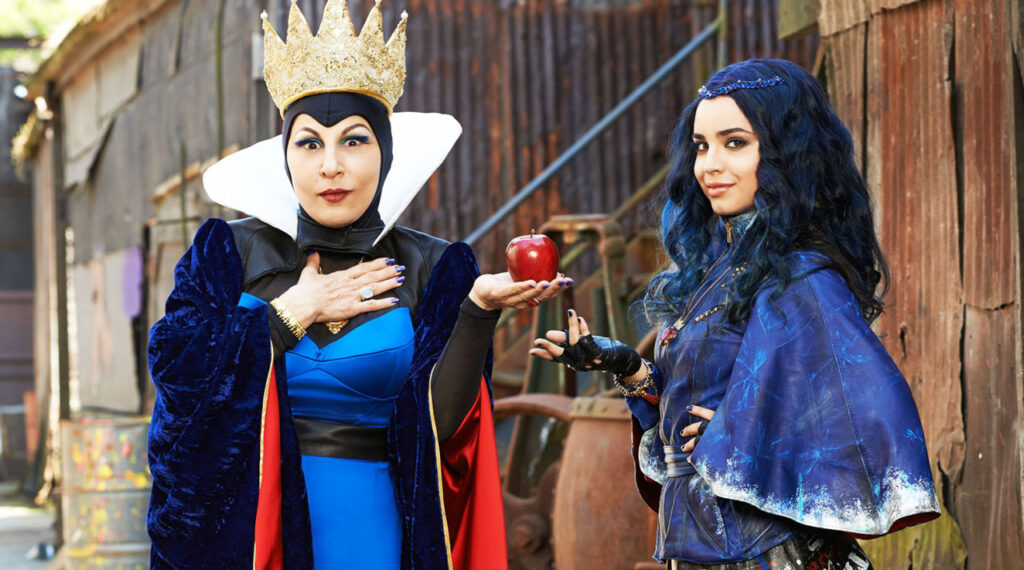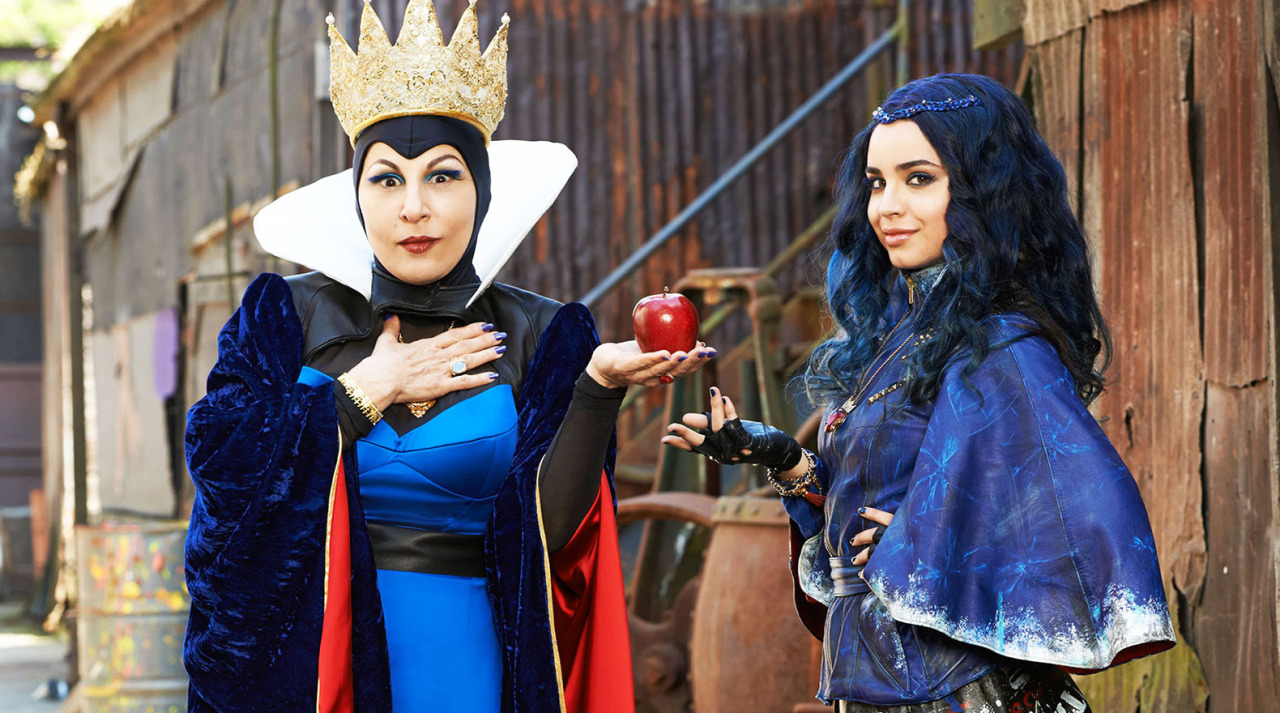
The Complex Legacy of the Evil Queen’s Daughter: Exploring Identity and Redemption
The figure of the evil queen, a staple in fairy tales and folklore, often casts a long shadow, not just on the protagonists but also on her own progeny. The concept of the evil queen’s daughter is a fascinating one, ripe with potential for exploring themes of nature versus nurture, the burden of legacy, and the possibility of redemption. This article delves into the multifaceted narrative possibilities surrounding such a character, examining how various stories and interpretations grapple with the question: can the evil queen’s daughter ever truly escape her mother’s influence?
The Shadow of a Villainous Mother
The immediate and most obvious challenge facing the evil queen’s daughter is the preconceived notions and prejudices she encounters. Society, conditioned by the mother’s actions, may automatically assume the daughter will follow in her footsteps. This societal expectation can be a heavy burden, forcing the daughter to constantly prove her own character and intentions. Imagine growing up knowing everyone expects you to be cruel and power-hungry, simply because of your lineage. This creates immense psychological pressure.
Furthermore, the mother’s influence, whether direct or indirect, can be a powerful force shaping the daughter’s personality. A neglectful upbringing characterized by emotional manipulation, or a deliberate indoctrination into the mother’s villainous worldview, could leave lasting scars. The evil queen’s daughter might struggle with issues of trust, self-worth, and the very definition of good and evil.
Breaking the Cycle: Rebellion and Individuality
However, the narrative potential of the evil queen’s daughter lies in her capacity to defy expectations. Many stories explore the daughter’s conscious decision to reject her mother’s path and forge her own identity. This rebellion can manifest in various ways, from acts of subtle defiance to outright opposition against the mother’s plans. The struggle to break free from the family legacy becomes a central conflict, pitting the daughter’s desire for autonomy against the ingrained patterns of behavior and the external pressures to conform.
The journey towards individuality often involves a period of self-discovery. The evil queen’s daughter might seek guidance from mentors or allies who offer alternative perspectives and support her efforts to change. She might also embark on a quest to understand her own values and beliefs, separate from the influence of her mother. This process can be fraught with challenges, as she confronts her own inner demons and grapples with the lingering effects of her upbringing.
The Spectrum of Morality: Gray Areas and Nuance
The story of the evil queen’s daughter offers a unique opportunity to explore the complexities of morality. Rather than presenting a simplistic dichotomy between good and evil, these narratives often delve into the gray areas of human behavior. The daughter might possess certain traits or tendencies inherited from her mother, but she ultimately chooses how to use those qualities. She might struggle with conflicting impulses, torn between her desire for good and the allure of power or revenge. This internal conflict adds depth and realism to her character, making her relatable even in a fantastical setting.
It’s also important to consider that the mother’s actions might not be entirely devoid of justification. Perhaps she was driven to villainy by circumstances beyond her control, or perhaps she genuinely believed she was acting in the best interests of her kingdom. Exploring the mother’s motivations can provide a more nuanced understanding of the evil queen’s daughter’s legacy and the challenges she faces in choosing a different path. By acknowledging the complexities of the situation, the narrative can avoid simplistic moralizing and offer a more thought-provoking exploration of human nature.
Redemption and Forgiveness: A Path to Healing
Ultimately, the story of the evil queen’s daughter often revolves around the possibility of redemption. Can she atone for her mother’s sins? Can she earn the trust and forgiveness of those who have been harmed? The path to redemption is rarely easy, requiring genuine remorse, selfless acts of service, and a willingness to confront the consequences of her family’s actions. The evil queen’s daughter may dedicate her life to undoing the harm caused by her mother or to protecting the innocent from future threats. Through these actions, she can demonstrate her commitment to a different way of life and earn the respect of those around her.
Forgiveness, both from others and from herself, is also a crucial element of the redemption narrative. The evil queen’s daughter may struggle with feelings of guilt and shame, haunted by the memory of her mother’s misdeeds. Learning to forgive herself for the sins of her parent is a vital step towards healing and moving forward. This process may involve seeking counseling, engaging in acts of self-compassion, or finding solace in supportive relationships. [See also: Overcoming Childhood Trauma in Fantasy Literature]
Examples in Popular Culture
The trope of the evil queen’s daughter appears in various forms throughout popular culture. One notable example is Maleficent’s daughter, Mal, in Disney’s “Descendants” franchise. Mal initially struggles with her identity as the daughter of a notorious villain, but ultimately chooses to embrace her own sense of good and lead the other villain kids towards a more positive path. This portrayal highlights the theme of breaking free from predetermined expectations and forging one’s own destiny.
Another example can be found in certain interpretations of the Snow White story, where the queen’s motivations and the potential for her daughter (if she existed in that version) to choose a different path are explored. While not always explicitly depicted, the *potential* story of an evil queen’s daughter allows for rich character exploration within the established fairytale framework.
The Enduring Appeal of the Narrative
The story of the evil queen’s daughter resonates with audiences because it taps into universal themes of identity, legacy, and the power of choice. It offers a compelling exploration of the complexities of human nature and the potential for individuals to overcome even the most challenging circumstances. The narrative also challenges us to question our own preconceived notions and to consider the possibility that even those who come from troubled backgrounds can find their way to redemption. The evil queen’s daughter, therefore, becomes a symbol of hope and resilience, demonstrating that the past does not have to define the future. The character arc of the evil queen’s daughter presents a refreshing take on the traditional fairy tale narrative, moving beyond simple good versus evil and embracing the nuances of human experience. We see her wrestling with her internal conflicts, dealing with the external pressures of society, and ultimately making choices that define her own moral compass. This internal struggle is what makes her story so compelling and relatable, even in a fantastical setting.
In conclusion, the figure of the evil queen’s daughter offers a rich and compelling narrative opportunity. Her story allows for the exploration of complex themes, including the burden of legacy, the struggle for individuality, and the possibility of redemption. By examining the challenges and choices she faces, we can gain a deeper understanding of human nature and the enduring power of hope. The tale of an evil queen’s daughter often acts as a mirror, reflecting our own struggles to define ourselves against expectations and the weight of our personal histories. [See also: The Psychology of Villains in Fairy Tales]
Exploring the narrative possibilities surrounding the evil queen’s daughter allows us to delve into the complexities of morality and identity. The evil queen’s daughter challenges us to consider the impact of parental influence and the choices we make in shaping our own lives. The story of an evil queen’s daughter provides a powerful reminder that we are not defined by our past, but by the choices we make in the present. The enduring fascination with the evil queen’s daughter stems from her ability to embody the hope for change and the potential for good to triumph over evil, even in the most unlikely of circumstances.

